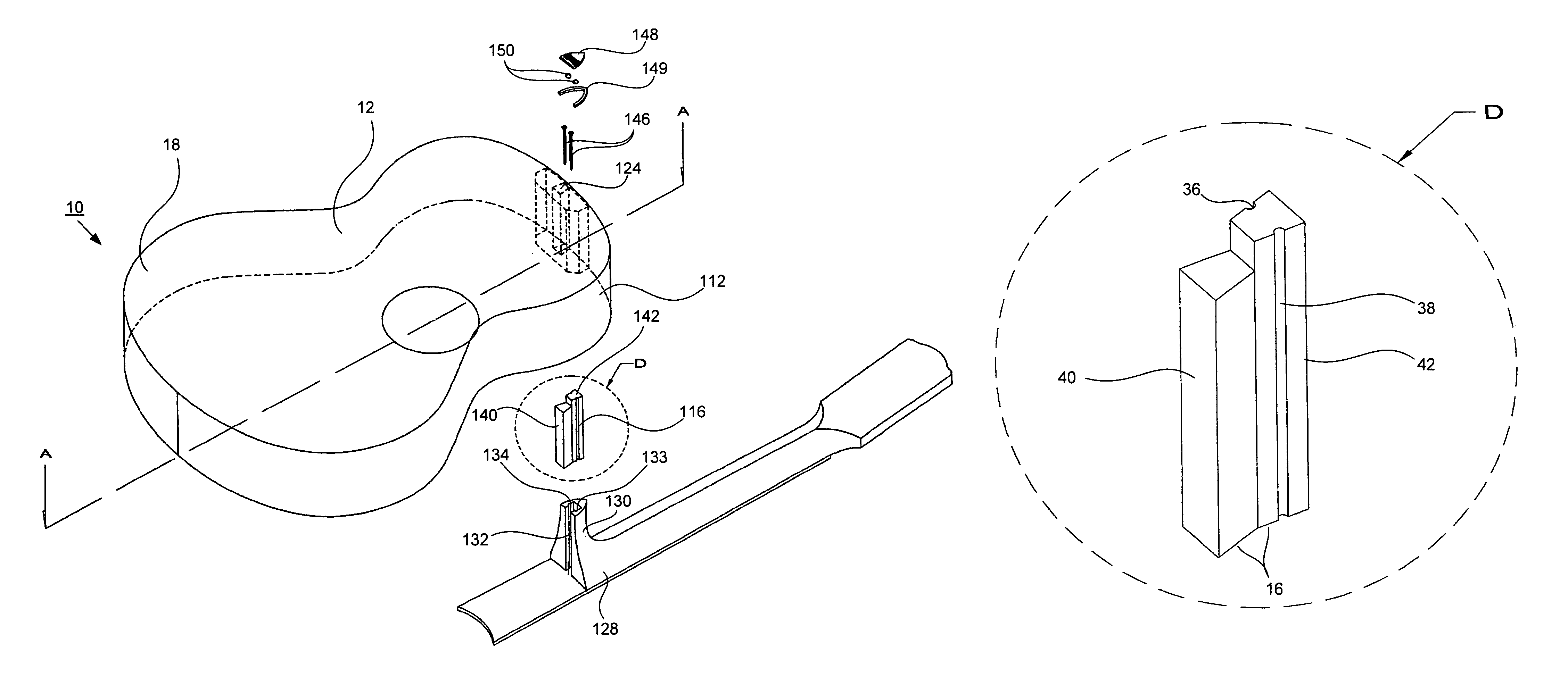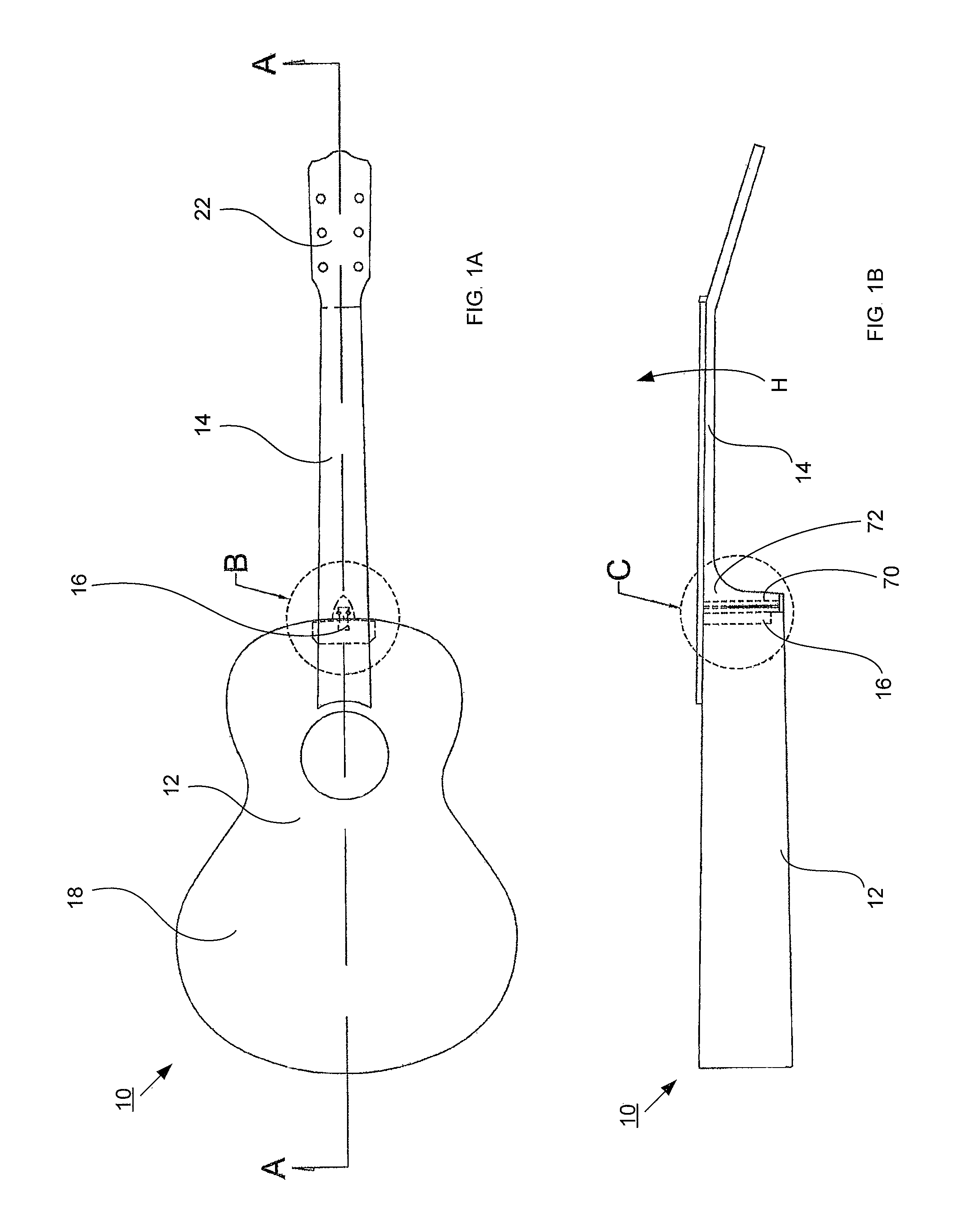Neck and body joint for a musical instrument
a neck and body joint technology, applied in the field of musical instruments, can solve the problems of troublesome service removal, time-consuming manufacturing process, inferior aesthetics of bolts, etc., and achieve the effect of improving the aesthetic nature of joints
- Summary
- Abstract
- Description
- Claims
- Application Information
AI Technical Summary
Benefits of technology
Problems solved by technology
Method used
Image
Examples
Embodiment Construction
[0027]As best seen in FIG. 1A and FIG. 1B, there is shown a top and side view of the framework of a guitar-like stringed instrument, generally designated as 10. Included within the scope of the invention are neck and body attachments for guitars, basses, violins, and cellos. Guitar framework 10 includes a body 12, a neck 14, and a key 16. The body 12 has a soundbox 18. The neck 14 has a headstock 22, and strings (not shown) are strung from headstock 22, along neck 14 and to soundbox 18 to complete the instrument. Tension on the strings applies force to the intersection of the body 12 and neck 14. Key 16, situated between body 12 and neck 14, provides adequate tension to resist lateral forces applied via instrument strings.
[0028]FIG. 2 shows a body 12 having a first interlocking interface 24 in an outside face of body 12. First interlocking interface 24 has a complementary shape to a first portion 40 of a key 16. Neck 14 has a distal end 26 and a proximal end surface 28. At proximal ...
PUM
 Login to View More
Login to View More Abstract
Description
Claims
Application Information
 Login to View More
Login to View More - Generate Ideas
- Intellectual Property
- Life Sciences
- Materials
- Tech Scout
- Unparalleled Data Quality
- Higher Quality Content
- 60% Fewer Hallucinations
Browse by: Latest US Patents, China's latest patents, Technical Efficacy Thesaurus, Application Domain, Technology Topic, Popular Technical Reports.
© 2025 PatSnap. All rights reserved.Legal|Privacy policy|Modern Slavery Act Transparency Statement|Sitemap|About US| Contact US: help@patsnap.com



